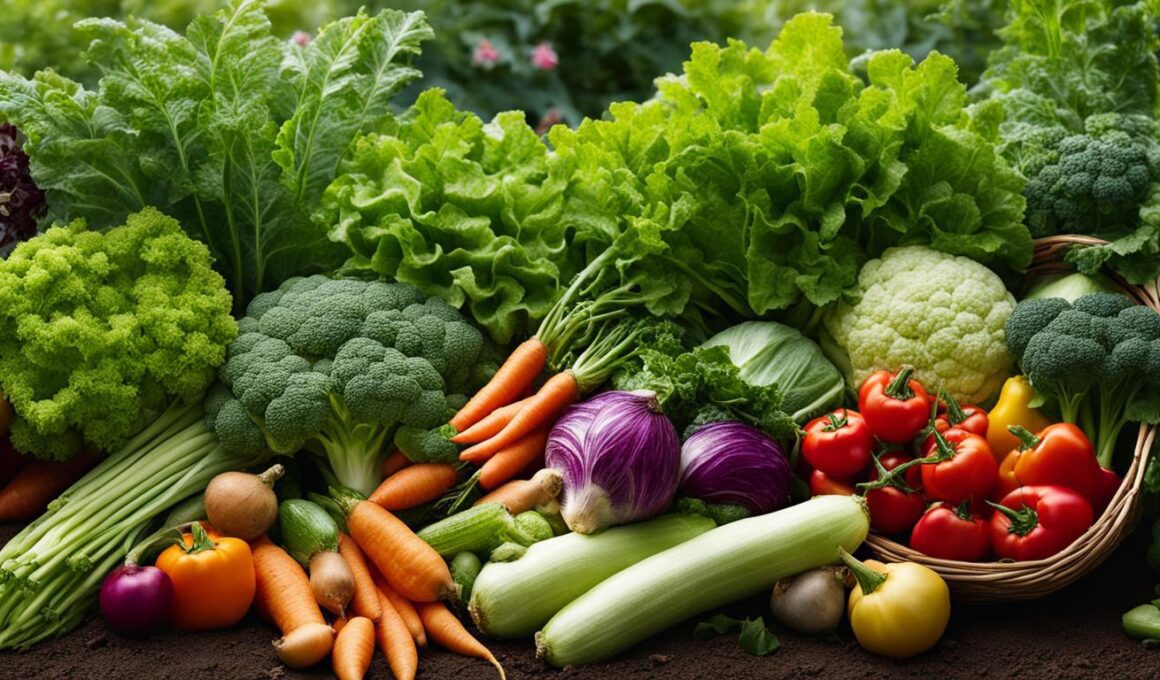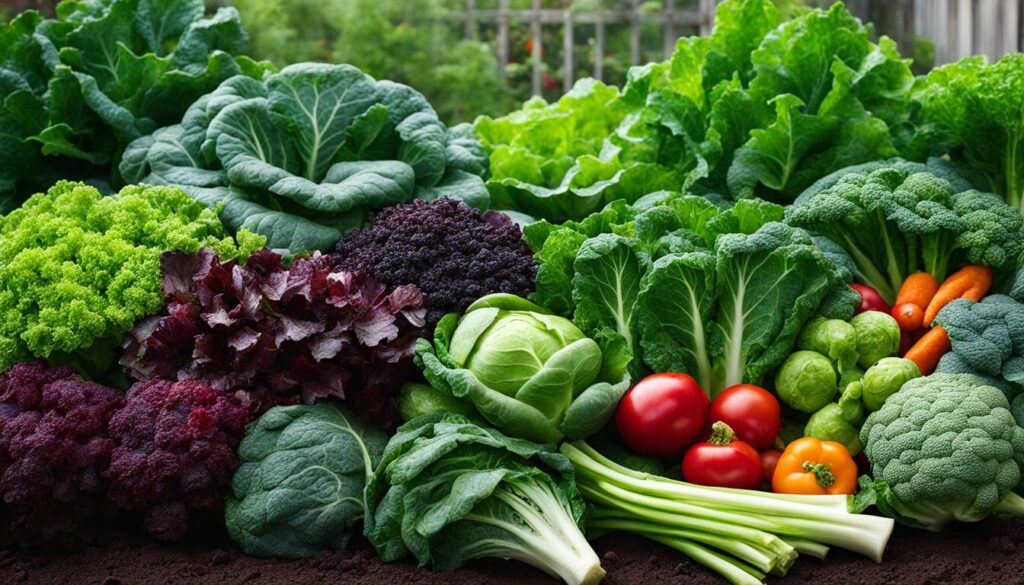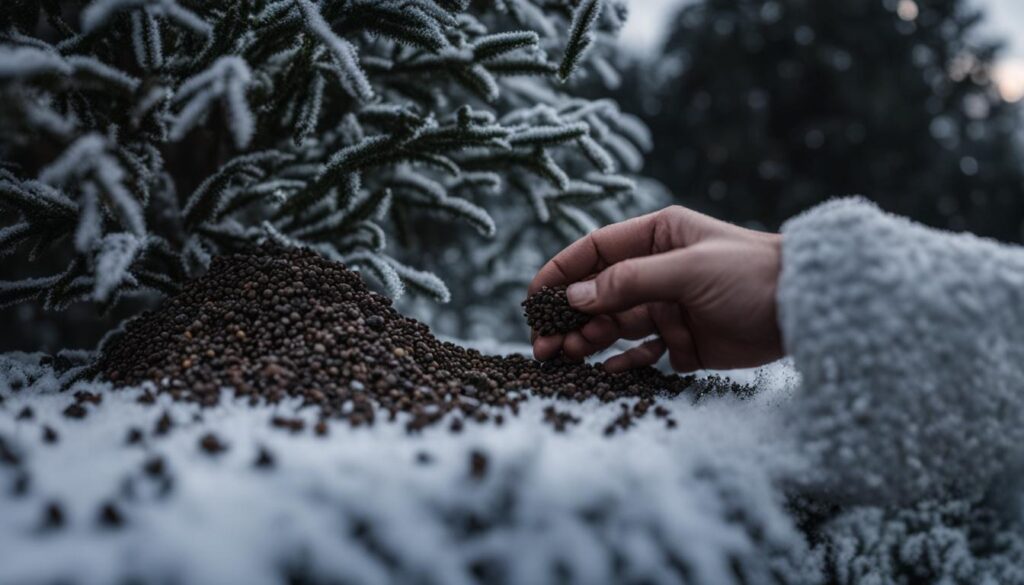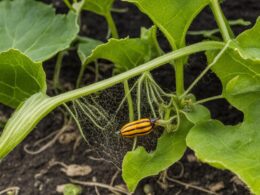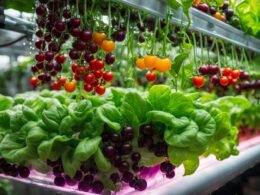Welcome to our comprehensive guide on unlocking vegetable cold tolerance. If you’re a gardener looking to extend your growing season and boost plant resilience in chilly weather, you’ve come to the right place. In this article, we’ll provide you with insights and tips on how to successfully cultivate cold-tolerant vegetables in your garden.
Key Takeaways:
- Choosing the right vegetable varieties is crucial for cold weather gardening.
- Start your cold-tolerant vegetables from seed or consider container gardening.
- Properly plan your garden layout to maximize space and sunlight exposure.
- Sow and plant winter vegetables during the ideal months for a continuous harvest.
- Protect your crops from pests and harsh weather conditions to ensure a fruitful yield.
Choosing the Right Vegetables for Your Garden
When planning your garden, it’s important to consider the specific vegetable varieties that are known for their cold tolerance. By selecting the right vegetables, you can ensure better success in colder weather conditions.
Some examples of hardy vegetables include broccoli, Brussels sprouts, cabbage, collards, English peas, kale, kohlrabi, leeks, radishes, spinach, and turnips. These vegetables can tolerate harder frosts and lower temperatures, making them a great choice for cooler climates.
On the other hand, semi-hardy vegetables such as beets, carrots, cauliflower, celery, Chinese cabbage, endive, Irish potatoes, lettuce, radicchio, rutabaga, and Swiss chard tolerate light frosts and slightly higher temperatures. These varieties are more suitable for regions with milder winters.
When choosing the right vegetables for your garden, consider the space you have available and the specific requirements of each vegetable. This will help you make informed decisions and create a successful cold-tolerant vegetable garden that provides fresh produce throughout the season.
Tips for Growing Cold-Tolerant Vegetables
When it comes to growing cold-tolerant vegetables, starting from seed is a popular choice. This allows you to have full control over the growth process and ensures you’re working with young, healthy plants. Whether you have a large garden or limited space, here are some tips to help you successfully grow cold-tolerant vegetables:
- Choose the right planting time: Cold-weather vegetables thrive in the cooler temperatures of spring and fall. Planting them during these seasons allows them to establish well before the heat of summer or the harshness of winter.
- Plan your garden layout: Before planting, take the time to plan your garden carefully. Consider the specific needs of each vegetable, including sunlight requirements, water needs, and spacing. Proper planning will maximize your space and prevent shading.
- Consider container gardening: If you’re a first-time gardener or have limited space, container gardening is an excellent option for growing cold-tolerant vegetables. Vegetables like lettuce, carrots, and peas thrive in containers and can be easily managed.
To summarize, starting vegetables from seed, planting at the right time, planning your garden layout, and utilizing container gardening techniques are all key factors to growing cold-tolerant vegetables. By following these tips, even first-time gardeners or those with limited space can enjoy a successful harvest of fresh, nutritious produce.
Sowing and Planting Winter Vegetables
In order to enjoy a bountiful harvest of delicious winter vegetables, it is important to know the proper sowing and planting techniques. Whether you choose to sow seeds directly in the ground or start with seed trays or modules, following these steps will set you up for success.
Direct Seed Sowing
Direct seed sowing is a straightforward method that involves preparing the soil, making shallow drills, and then sowing the seeds. It is important to water the base of each drill before sowing to ensure good seed-to-soil contact. This method is ideal for vegetables like radishes, spinach, and turnips. Simply follow the recommended spacing for each vegetable and cover the seeds with soil. Keep the soil consistently moist until germination occurs.
Module Sowing
Module sowing is a great option for those who want to start their winter vegetables indoors before transplanting them into the ground. Fill modules with compost and sow several seeds per module. Once the seeds have germinated, thin them out by removing the weaker seedlings, leaving only one strong plant per module. When the weather is suitable, plant the clumps outdoors, ensuring they have enough space to grow and develop.
Seed Trays
Another method for starting winter vegetables indoors is using seed trays. Fill the trays with a combination of compost and vermiculite or perlite to improve drainage. Sow the seeds according to the recommended spacing and cover them lightly with the compost mixture. Place the trays in a warm and well-lit area, ensuring they receive adequate moisture. Once the seedlings have grown strong enough, they can be transplanted into the ground.
Transplanting is an essential step in the sowing and planting process for winter vegetables. It is important to move young plants into the ground before they develop yellowing leaves, as this indicates a nitrogen deficiency. Carefully transplant the seedlings, making sure to provide enough space for their growth. This will enable them to establish well and thrive throughout the winter season.
To protect your winter vegetables from pests and harsh weather conditions, consider using netting or mesh to keep insects away. Additionally, you can use fleece or mesh to protect the crops from harsh winds and snow. This will ensure that your plants stay healthy and continue to produce a bountiful harvest. Remember to harvest leafy winter vegetables by picking the outer leaves, allowing for a continuous harvest over several months.
Conclusion
Vegetable gardening in cold weather can be a rewarding endeavor that extends your growing season and enhances plant resilience. By understanding vegetable cold tolerance and implementing the right techniques, you can cultivate a thriving garden even in chilly temperatures.
Choosing the right vegetable varieties is crucial for successful cold weather gardening. Hardy vegetables like broccoli, Brussels sprouts, and kale, along with semi-hardy ones such as carrots and Swiss chard, are excellent options. Their ability to tolerate cold temperatures makes them ideal for growing in cooler seasons.
Vegetable cultivation in cold weather requires planning and proper techniques. Starting vegetables from seed, organizing your garden layout, and utilizing container gardening are effective strategies. Additionally, sowing and planting winter vegetables in the right manner ensures healthy growth and a continuous harvest.
Remember to protect your crops from pests and harsh weather conditions. By implementing measures such as netting and mesh to guard against pests, as well as fleece or mesh for wind and snow protection, you can maintain the health of your plants and enjoy bountiful yields.
With vegetable cold tolerance, you can unlock the potential for year-round vegetable gardening and savor the delight of homegrown produce in every season. Embrace the opportunities to extend your growing seasons, cultivate resilient plants, and enjoy the abundance of your efforts in cold weather gardening.
Can DIY Plant Spray Help Increase Cold Tolerance in Vegetables?
Using a DIY plant spray for growth can potentially increase cold tolerance in vegetables. Applying the spray to the leaves can help improve the plant’s resistance to frost and cold temperatures. Incorporating natural ingredients like garlic, pepper, and oil in the spray may aid in protecting the plants from chilly weather.
FAQ
What are some examples of cool season crops?
Cool season crops include lettuce, carrots, onions, peas, beans, artichokes, broccoli, and cauliflower.
Can cool-weather vegetables tolerate frost?
Many cool-weather vegetables can tolerate short periods of frost and even benefit from it.
How can starting with young plants from Bonnie Plants help?
Starting with young, vigorous plants from Bonnie Plants can give a head-start on maturity for many cool season plants.
Do root vegetables need to be grown from seed?
Yes, root vegetables typically need to be grown from seed.
Can cool-weather vegetables be grown in containers?
Yes, cool-weather vegetables can grow well in containers, making it easier for gardeners with limited space or challenging early-spring ground conditions.
What are the categories of cool weather vegetables?
Horticulturists categorize cool weather vegetables into “hardy” and “semi-hardy” types, with hardy vegetables tolerating harder frosts and lower temperatures.
What are some examples of hardy vegetables?
Some examples of hardy vegetables are broccoli, Brussels sprouts, cabbage, collards, English peas, kale, kohlrabi, leeks, radishes, spinach, and turnips.
What are some examples of semi-hardy vegetables?
Semi-hardy vegetables, like beets, carrots, cauliflower, celery, Chinese cabbage, endive, Irish potatoes, lettuce, radicchio, rutabaga, and Swiss chard, tolerate light frosts and slightly higher temperatures.
How can I choose the right varieties for my garden?
When planning your garden, consider the specific vegetable varieties that are known for their cold tolerance.
Can you provide examples of hardy and semi-hardy vegetables?
Some examples of hardy vegetables include broccoli, Brussels sprouts, cabbage, collards, English peas, kale, kohlrabi, leeks, radishes, spinach, and turnips. Semi-hardy vegetables include beets, carrots, cauliflower, celery, Chinese cabbage, endive, Irish potatoes, lettuce, radicchio, rutabaga, and Swiss chard.
What are the key steps in vegetable cultivation for colder weather?
Starting vegetables from seed, planning the garden layout, utilizing container gardening, and properly sowing and planting winter vegetables are key steps in vegetable cultivation.
When is the ideal time to plant cool-weather vegetables?
Early spring is a perfect time to plant cool-weather vegetables, as the cooler temperatures keep pests at bay and allow for a longer growing season.
What should I consider when planning my garden for cool-weather vegetables?
Garden planning is crucial to make the most of your space and ensure proper placement of taller plants to avoid shading.
Can cool-weather vegetables be grown in containers?
Container gardening is a great option for first-time gardeners or those with limited space, as vegetables like lettuce, carrots, and peas thrive in containers.
How can I sow and plant winter vegetables?
August is the ideal month to start sowing winter vegetables that will be ready to eat during the winter and the following year’s hungry gap. Many winter crops can be sown directly into the ground, while others can be started in module trays for easy transplantation.
What are the steps for direct seed sowing?
Direct seed sowing requires preparing the soil, making shallow drills, and watering the base of each drill before sowing the seeds.
How can I transplant young plants for winter vegetables?
Transplanting young plants into the ground before they develop yellowing leaves ensures they have enough nitrogen and can establish well.
How can I protect winter vegetables from pests and weather?
Consider using netting or mesh to protect the crops from pests, as well as fleece or mesh to protect them from harsh winds and snow.
How should I harvest leafy vegetables?
Harvest leafy vegetables by picking the outer leaves, which allows for a continuous harvest over several months.
What is the significance of vegetable cold tolerance?
Unlocking vegetable cold tolerance is essential for extending the growing season and boosting plant resilience in chilly weather.
Can vegetables be successfully cultivated in colder climates?
By choosing the right vegetable varieties and implementing proper gardening techniques, gardeners can successfully cultivate vegetables in colder climates.
What is the importance of protecting crops?
Protecting the crops from pests and harsh weather conditions is crucial for maintaining healthy plants and ensuring a bountiful harvest.
What does vegetable cold tolerance enable gardeners to do?
Vegetable cold tolerance opens up opportunities for year-round vegetable gardening and provides fresh, delicious produce for meals.





